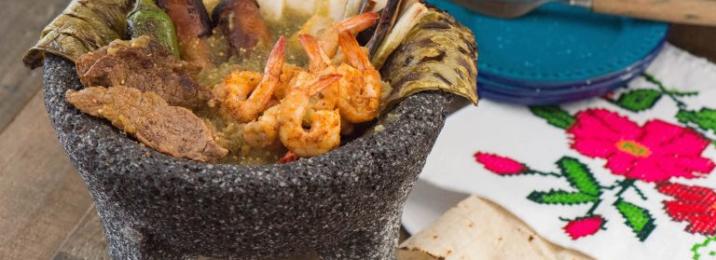A Guide to Mexican Chili Peppers
Mexican Chili – How do you know if you’re eating at an authentic Mexican restaurant? The best way to determine this is to check the ingredients list for dishes like pico de gallo, rellenos, adobo, and mole. If chili peppers, or chiles as they’re called in Mexico, are not on the list, then you may not be eating the real thing.
Chili peppers are fruits of capsicum plant varieties, and while they originate in the Americas, they were first cultivated in Mexico. To this day, they remain essential to Mexican cuisine.
There are many kinds of Mexican chili peppers, varying in flavors, color, and heat level. The right one can transform a bland meal into an exciting dish that will have you coming back for more.
Whether you’re a professional chef, home cook, or simply someone who just wants to learn more about Mexican cuisine, you’ll benefit from reading up on the types of Mexican chilis commonly used in food.
Seven Mexican Chili You Should Know
1. Jalapeño
One of the most recognizable Mexican peppers, jalapenos have a distinctive taste and moderate kick. For this reason, it’s used to flavor everything from potato chips to margaritas. In Mexican cuisine, jalapenos are an ingredient in a wide variety of dishes, such as rellenos and chiles en Nogada.
When still green, these fresh Mexican peppers taste like bell peppers with a hint of sweetness and zing. However, when left to ripen and turn red, jalapenos become slightly spicier, thanks to increased capsaicin–-the natural chemical in peppers responsible for their burning effect.
The Scoville scale, which is used to measure the amount of capsaicin in peppers, rates jalapenos at 2,000 to 8,000 Scoville Heat Units (SHUs).
2. Chipotle
Mexican chilis, when processed, are given new names to distinguish them from their fresh counterparts. For instance, chipotle peppers are actually ripe jalapenos that have been smoked.
Chipotle peppers are sweet, smoky, and only mildly hot. They are the main ingredient of chipotles en adobo. To make this dish, chipotles are rehydrated and soaked in an adobo sauce made from tomatoes, vinegar, garlic, and spices. The result is a sweet, tart, and rich sauce that can be combined with other ingredients to make a stew.
These delicious Mexican chilis can also be used in salad dressings, soups, and seasonings. The heat of chipotle peppers ranges from 2,500 to 8,000 SHUs.
3. Poblano
When fresh off the vine, poblanos are dark purplish green in color, and turn darker over time.
Poblano peppers are less spicy than jalapenos, measuring just 1,000–1,5000 on the Scoville scale. Their relatively low heat, combined with their thickness and length, make them perfect for stuffed pepper recipes. Poblanos also add flavor and heat to guacamole, salsa, and stews.
Poblanos that are harvested early, roasted, peeled, and dried are sold as ancho peppers. The ancho pepper has flavor notes of chocolate and raisins. It is very common in Mexican cuisine and one of the “Holy Trinity” of Mexican chilis, the others being mulato and pasilla chilis.
4. Mulato
Mulato peppers are poblano peppers that have spent longer on the vine than anchos. When they’ve turned a dark brown color, poblano peppers become fully mature and are harvested and dried. They are then marketed and sold as mulato peppers.
They have a taste distinct from that of fresh poblanos and ancho peppers. They’re sweeter and smokier, with a flavor reminiscent of licorice and tobacco. Mulato peppers are used in moles, marinades, and sauces for chilis, tamales, soups, and stews. They are usually ground into a powder and used as a spice or dry rub for meats.
On the Scoville scale, mulato peppers range from 500 to 2,500 SHUs.
5. Habanero
Plump, small, and shaped like lanterns, habaneros start as light green in color and turn yellow, orange, and then red as they ripen. They are quite hot, with a Scoville rating of 100,000–350,000 on the Scoville scale.
What’s more, the heat from these peppers can last for up to half an hour. If you accidentally touch the juice from a habanero, you can feel a burning sensation on the affected spot for up to 24 hours.
Chopped habaneros are a traditional side dish served with cochinita pibil, a slow-roasted pork dish originating from the Yucatán Peninsula. These fiery Mexican peppers are also a popular ingredient in salsas and sauces, thanks to their fruity, citrusy flavor as well as their heat.
6. Serrano
Fresh-tasting, with a crunchy skin, serrano peppers are ideal for salsas and salads. While they’re moderately hot at 10,000 to 25,000 SHUs, their “delayed-release” spiciness might have you not feeling any burning in your mouth until minutes after you eat them. As with all peppers, the smaller the serranos are, the hotter they’re likely to be.
Serrano peppers are often eaten raw, but they can also be cooked in chilis, stews, and soups. They’re also delicious pickled, especially when chopped and incorporated into taco filling.
7. Chile de Árbol
Only two to three inches long, this small chili packs plenty of punch, ranking between 15,000 and 30,000 SHUs on the Scoville scale. Unripe chiles de árbol start out a light green color and turn bright red as they ripen.
These Mexican peppers are often sold dried, to be rehydrated before cooking. Because they don’t turn brown after drying and retain their vivid scarlet hue, chiles de árbol are used to create ristras, decorative wreaths made of edible ingredients.
However, they can also be served fresh or ground to a powder for use as a spice. Chiles de árbol add instant heat to any sauce, salsa or dish, elevating Mexican favorites like huevos rancheros, burritos and tacos al pastor.
Explore Mexican Chili and the World of Spice at Benito’s
There’s no need to fly to Mexico to experience authentic Mexican cuisine that uses real Mexican chilis. Benito’s Restaurant in Fort Worth, TX, serves a wide variety of dishes that incorporate Mexican peppers, such as chiles relleno, calabacitas, and huevos ala Mexicana. View our menu to learn more, and contact us at (817) 332-8633 to inquire about seating.






